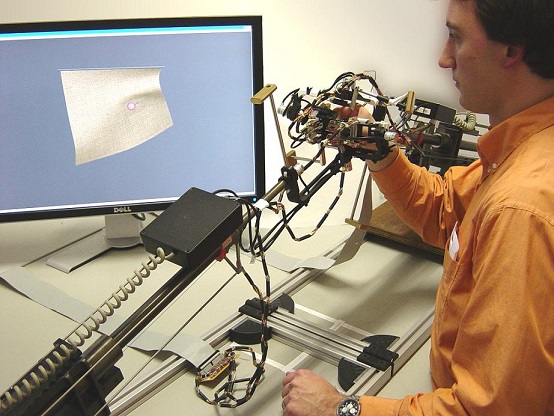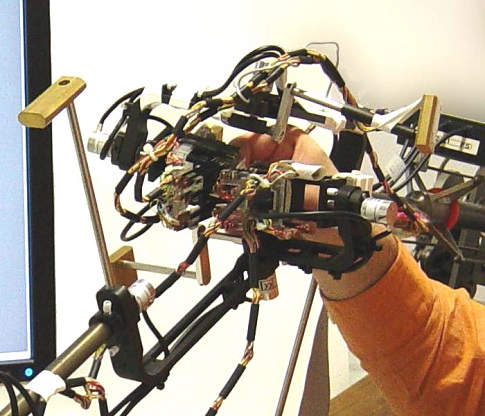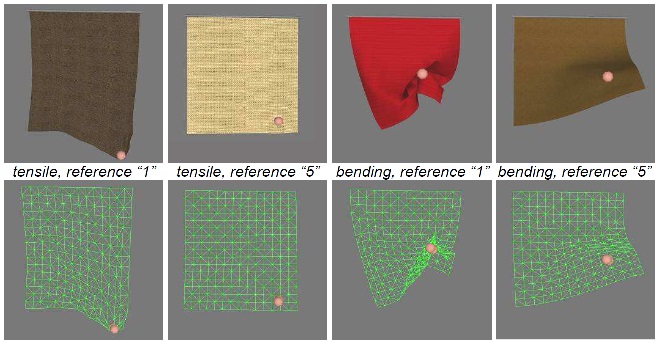HAPTEX was an EU-funded project (EU-FP6-IST: IST-6549) on multimodal perception of textiles in virtual environments.
Its main goal was to develop a complete virtual reality system for visuo-haptic interaction with virtual textiles. The project produced a workable system for the presentation of virtual textiles, with successful integration of a wide range of hardware and software components (including the visual display, the haptic/tactile system and the modelling/rendering software).
Screen shots for manipulations of some virtual textiles: stretching to evaluate tensile stiffness and draping to evaluate bending stiffness. The lower panels show the underlying physical model.
The HAPTEX project Click here for a related video on YouTube


The Exeter contribution to the project focused on the tactile component. This involved the development of novel stimulator hardware (see the Stimulators page), together with drive electronics and tactile-rendering software for generating “on the fly” the appropriate spatiotemporal patterns of tactile stimulation on the index finger and thumb of the user's hand. The tactile stimulator has 24 contactors per digit (6 × 4 array, with 2 mm spacing between contactor centres); piezoelectric drive mechanisms give individually specified movement of each contactor (working bandwidth 20-400 Hz). Hardware and software development was carried out by Alan Brady and Jianguo Qu at Exeter, Dennis Allerkamp at the University of Hanover, and other members of the HAPTEX consortium (see below for a list).
Evaluation of the HAPTEX System involved the manipulation and rating of virtual textiles, with comparison to ratings of the corresponding real textiles. Various textile properties were rated: surface roughness, surface friction, tensile stiffness and bending stiffness,. In all but the latter case (i.e., in three cases from four) there was a good correspondence between the ratings of the virtual textiles and the real textiles, providing evidence that the system delivered appropriate cues.

PUBLICATIONS
The HAPTEX project is summarised in:
N Magnenat-Thalmann, P Volino, U Bonanni, IR Summers, M Bergamasco, F Salsedo and F-E Wolter; From Physics-based Simulation to the Touching of Textiles: The HAPTEX Project; The International Journal of Virtual Reality 6 (2007) 35-44 view pdf
Note that the the tactile rendering strategy used in the the final version of the HAPTEX system is not exactly the one described in this paper – the strategy used is very similar to that outlined on the Virtual Touch 2 page.
Evaluation of the HAPTEX system is described in one of the project deliverables:
IR Summers (for the HAPTEX consortium); D5.2 Final demonstrator and
final integration report; EU-FP6-IST: IST-6549 HAPTEX (2007) pp.16 view pdf
THE HAPTEX CONSORTIUM
The following is not an exhaustive list – apologies to those not included.
MIRALab, University of Geneva (CH): Nadia Magnenat-Thalmann, Ugo Bonanni, Pascal Volino, Christiane Luible